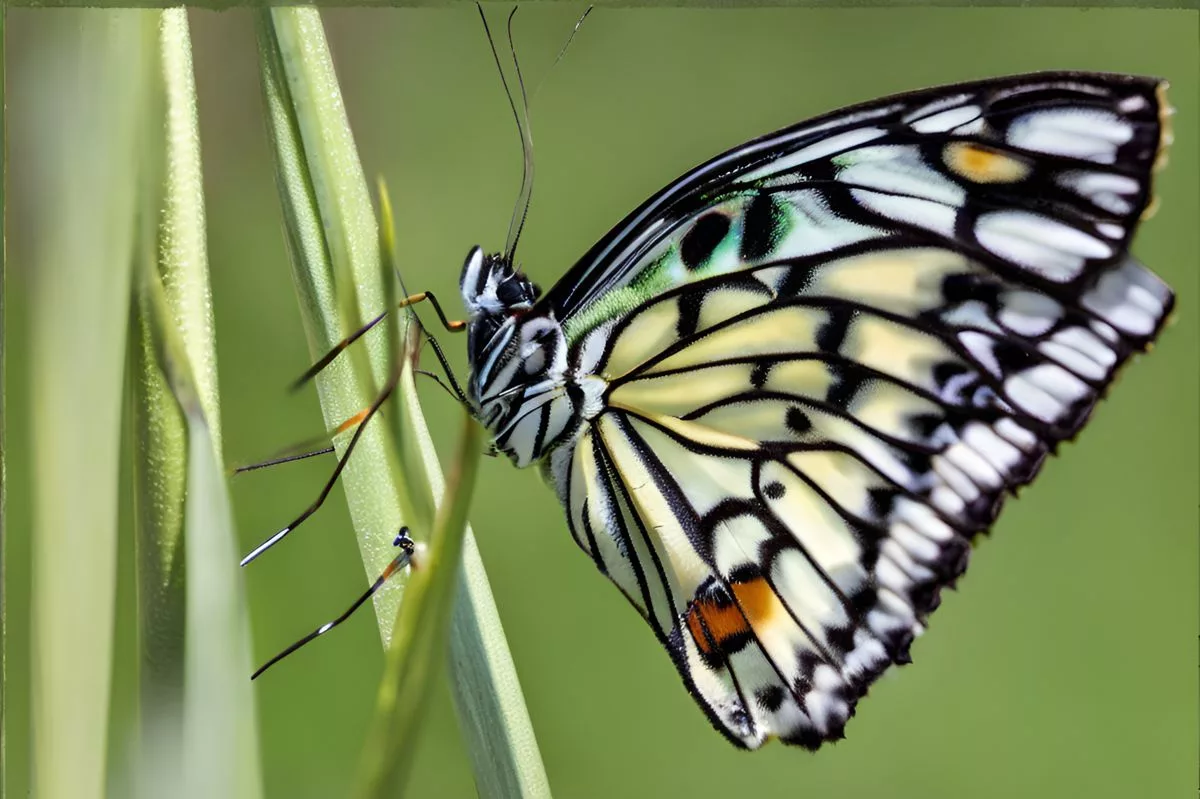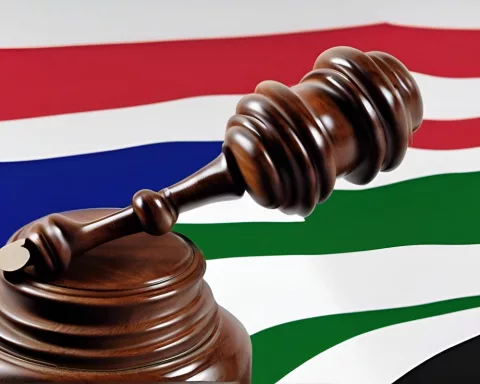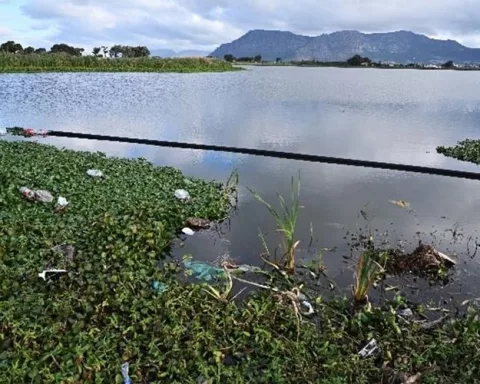The endangered Barber’s Cape Flats Ranger butterfly, with a population of only fifty, is found exclusively in Strandfontein and is under threat due to plans for a multi-level development project in the area. The proposed development could increase traffic, which is already causing butterfly deaths due to collisions and pollution, leading to the loss of the butterfly species and disturbing the ecological function of the area. The potential consequences of these development plans go far beyond the butterflies, affecting other animals that inhabit the increasingly fragmented habitat and calling for immediate conservation actions.
Strandfontein and Its Critical Role in Biodiversity
The critically endangered Barber’s Cape Flats Ranger butterfly, with a population of only fifty, is found exclusively in Strandfontein. Plans for a multi-level development project in the area pose a severe threat to the butterfly’s survival, potentially leading to extinction. The proposed development could increase traffic, which is already causing butterfly deaths due to collisions and pollution. The loss of the butterfly species could disturb the ecological function of the area.
The iconic Cape Town, internationally recognized for its impressive biodiversity, is now facing a significant trial. Plans for a substantial multi-level development project in Strandfontein are on the horizon, posing a severe threat to one of the world’s rarest butterfly species, pushing them closer to the brink of extinction. This ambitious “coastal urban node” development proposes the conversion of the serene Strandfontein Pavilion into a pulsating space with more than 1,000 residential units, commercial venues, leisure facilities, and an innovative aquaponics farm.
Strandfontein and Its Critical Role in Biodiversity
In the grand narrative of urban development, Strandfontein might be just another piece in the vast puzzle of Cape Town’s urbanization project. However, for the critically endangered Barber’s Cape Flats Ranger butterfly, the site holds a crucial importance that goes beyond human understanding. This butterfly species, with a surviving population of only fifty, is found exclusively in this area.
The Barber’s Cape Flats Ranger, previously known as Kedestes barbarae bunta, was left unnoticed in the initial Conceptual Development Framework published in 2022. The document mentioned the existence of this butterfly and warned against any modification to Strandfontein Road due to its presence. Ironically, the road itself is a substantial threat to the butterfly’s survival. The proposed development could potentially lead to a substantial increase in traffic, which might turn the road into a pathway towards extinction for this unique species.
The Study and Impact on the Butterflies
Lepidopterists, the experts who study butterflies and moths from the Lepidopterist Society of Africa, supplied Infinite Environmental with maps. This consulting firm, responsible for developing the Basic Assessment Report for the project, was shown where swordgrass, the butterfly’s host plant, is located. Swordgrass, which can be found on either side of Strandfontein Road, is also essential for the life cycle of another critically endangered butterfly, the enigmatic False Bay Unique Ranger.
The potential habitat loss due to increased traffic and possible road widening could not only push these butterfly species closer to extinction but also disturb the ecological function of the area. According to the South African National Biodiversity Institute (SANBI), the rise in vehicle traffic on Strandfontein Road has already caused an increase in butterfly deaths due to collisions with vehicles and the harmful effects of airborne toxins and pollutants.
Anthony Roberts, CEO of Nature Connect, confirms that the proposed development will undeniably affect the endangered butterflies, despite ecological assessments stating otherwise. He emphasised the importance of preserving the Dune Strandveld vegetation, which promotes swordgrass growth, crucial for the butterflies. The stretch of Dune Strandveld that connects Table Mountain and the Hottentots Holland Mountain chains is an essential ecological corridor for the region’s flora and fauna.
A Neglected Promise and the Wider Implications
Unfortunately, South Africa, a signatory to the United Nations’ Convention of Biological Diversity, has not yet fulfilled its pledge to preserve at least 30% of coastal areas, especially those of ecological importance, by 2030. Despite this serious lapse, the invaluable and irreplaceable Dune Strandveld vegetation type continues to be demolished.
The potential consequences of these development plans go far beyond the butterflies. Distinguished Professor Michael Samways from Stellenbosch University stressed the imperative need to protect the Cape Flats Dune Strandveld, stating that the considerable threats it faces calls for immediate conservation actions.
The concern also extends to other animals that inhabit this increasingly fragmented habitat. Caracal, grysbok, porcupines, genet, and mongoose are a few examples of the various wildlife affected. Recent sightings of honey badgers on Table Mountain indicate the continued use of this coastal strip as a wildlife corridor.
While the city government recognises the Barber’s Ranger colony’s existence, it considers the planned development at Strandfontein to be a safe distance from the butterfly’s habitat. Environmentalists, however, argue that the impact isn’t confined to the immediate surroundings of the development site. City officials have noted concerns about raised traffic and potential road widening plans to accommodate it, but how these will be addressed in the development plans remains uncertain.
At this pivotal point, it’s crucial to note that every species contributes uniquely to the intricate web of an ecosystem. The survival of the Barber’s Ranger and the False Bay Unique Ranger butterflies is more than a preservation of biodiversity – it’s an upholding of a delicate balance that has developed over eons. The question now remains whether Cape Town will risk flirting with extinction or pave the way towards a sustainable future.
What is the Barber’s Cape Flats Ranger butterfly and why is it endangered?
The Barber’s Cape Flats Ranger butterfly is an endangered species with a population of only fifty, found exclusively in Strandfontein, Cape Town. The proposed multi-level development project in the area poses a significant threat to the butterfly’s survival due to potential habitat loss, increased traffic, and road widening, which can cause collisions and pollution, leading to extinction.
What is the significance of Strandfontein in biodiversity conservation?
Strandfontein is a critical area for biodiversity conservation in Cape Town. It is home to the critically endangered Barber’s Cape Flats Ranger butterfly, which is found exclusively in this area. The site also hosts the essential Dune Strandveld vegetation type, promoting swordgrass growth, a critical element in the butterfly’s life cycle. The Dune Strandveld vegetation type is also a crucial ecological corridor for the region’s flora and fauna.
What is the impact of increased traffic on butterfly populations?
The rise in vehicle traffic on Strandfontein Road has already caused an increase in butterfly deaths due to collisions with vehicles and the harmful effects of airborne toxins and pollutants. The proposed development could lead to a substantial increase in traffic, which might turn the road into a pathway towards extinction for the unique species of butterflies found in the area.
Why is the conservation of the Dune Strandveld vegetation type critical?
The Dune Strandveld vegetation type is essential for supporting biodiversity in the Strandfontein area. It promotes swordgrass growth, which is crucial for the life cycle of the Barber’s Cape Flats Ranger butterfly and False Bay Unique Ranger butterfly. The stretch of Dune Strandveld vegetation that connects Table Mountain and the Hottentots Holland Mountain chains is an essential ecological corridor for the region’s flora and fauna.
How does the proposed development project affect other wildlife in the area?
The proposed development project in Strandfontein also poses a severe threat to other wildlife in the area, such as caracal, grysbok, porcupines, genet, and mongoose. Recent sightings of honey badgers on Table Mountain indicate the continued use of this coastal strip as a wildlife corridor. Fragmentation of habitat due to the development project can lead to the loss of these species and disturb ecological functions in the region.
What is at stake if the development project proceeds without conservation measures?
The proposed development project in Strandfontein poses a severe threat to the survival of the critically endangered Barber’s Cape Flats Ranger butterfly and other wildlife in the area. The loss of these species can disturb the ecological balance, affecting the region’s flora and fauna. The development project’s impact is not confined to the immediate surroundings of the development site, and it calls for immediate conservation actions.












